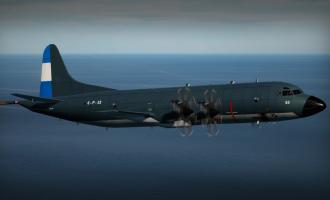The United States plans to launch a military experiment this fall to test out new concepts including Artificial Intelligence under battlefield conditions to gain the ability to defeat “a high-tech adversary with a striking resemblance to China”.
The experiment, named Project Convergence, will be organised by the army in Arizona in October and November, according to Colonel Tobin Magsig, head of the army’s joint modernisation command, quoted by American defense publication, DefenseOne. The experiment will see in action, like never before, more stealth aircraft, navy missiles and AI tools” operated by the actual military
users and not scientists.
The project has “become the Army’s largest technology combat experiment to test out new artificial intelligence, autonomy and software tools even rapid software development under battlefield conditions.
It is now the “most important U.S. military experiment to test out new concepts for interconnecting planes, drones, ships and operators across the battlefield and across the services...(and) is aimed at rapidly accelerating the army’s ability to find and take out targets by connecting people, vehicles and weapons through a massive, interconnected sensing and shooting kill web”.
In 2020, the experiment conduced operations aimed at bringing down “the time it takes to detect, identify and fire on targets from 15 minutes to less than one.... the key (for this) is quickly sharing lots of intelligence and targeting data across many different weapons, vehicles, operators, etc”. It was here that the American’s army’s experimental AI – the FIRESTORM program – played a major role “in fusing that data and suggesting which weapon or unit was the optimal choice to take out the target”.
Gen. John Murray, the head of Army Futures Command, said the Army will also be testing how well it can use “FIRESTORM in terms of its ability to interact and in some cases provide decisions for joint fires and controlling joint air space”. In 2021, the experiment will look at these concepts at “distances intentionally built to replicate distances in the INDOPACOM [India Pacific Command)” meaning thereby “the vast stretches of ocean between Guam, various island chains and China”.
Nobody in the American military establishment is mentioning China by name, but DefenseOne quotes them as saying that the “experiment would further test the military’s ability to breach high-tech anti-access area denial defenses, such as long-range missiles and effective electro-magnetic interference, which China possesses to a greater degree than any other potential adversary in the INDOPACOM area”.
The American experiment is to be seen in the context of China’s modernisation of the People’s Liberation Army. Its air force is developing stealth capabilities and the two-seat J-20 fighter craft will probably have them. The PLA Air Force is conducting research into sixth generation fighter craft that come equipped with their own auxiliary drones and AI integration. They may be inducted by 2035.
The Americans are also keenly watching the developing Chinese space military capabilities. Defense journals say “China deploys and operates a proven Kinetic Anti-Satellite (ASAT) capability (and) is making significant investments in ballistic missile capabilities to destroy satellites in geosynchronous orbit, and its Satellite Navigation System – the Beidou, whose last satellite was launched on 23 June 2020 – has made the country independent of the American Global Positioning Satellite (GPS) navigation constellation”. It has established satellite tracking stations also in Pakistan, Namibia and Chile.
The PLA Navy has modernised its warships, replacing its old ones with third and fourth generation destroyers. It has commissioned ‘Nanchang’- China’s first guided-missile destroyer. In the coming year, it may launch a frigate equipped with an integrated electric propulsion system. China wants to double the number of its modern destroyers to around 40 by 2025. It already has two aircraft carriers, with a third one on the way. The naval modernisation supplements the country’s aggressive policies against its neighbours.
A Brookings Institution paper by Elsa B. Kania, titled ‘AI weapons in China’s military innovation’, says “AI-enabled systems and autonomous capabilities” spearhead its military modernization projects. The paper says: “Across services and for all domains of warfare, it has fielded a growing number of robotic and unmanned systems, as well as advanced missiles with precision guidance, some of which may possess at least limited degrees of autonomy.”
It says while the army focuses on “military robotics and unmanned ground vehicles”, the navy is “experimenting with unmanned surface vessels that may operate with some autonomy and is reportedly developing autonomous
submarines” The air force “operates advanced unmanned systems with limited autonomy that could be upgraded to include greater autonomy, while exploring options for manned-unmanned teaming” Finally, the PLA Rocket Force (PLARF) may use AI in “remote sensing, targeting, and decision support, and its missiles may be augmented to become more ‘intelligentized’ in their capabilities incorporating higher levels of automation to facilitate operations”.

Κόσμος
Ενημερώθηκε στις:
2021 to see sharp US-CHINA military Artificial Intelligence competicion

Ακολουθήστε το Πενταπόσταγμα στο Google news













